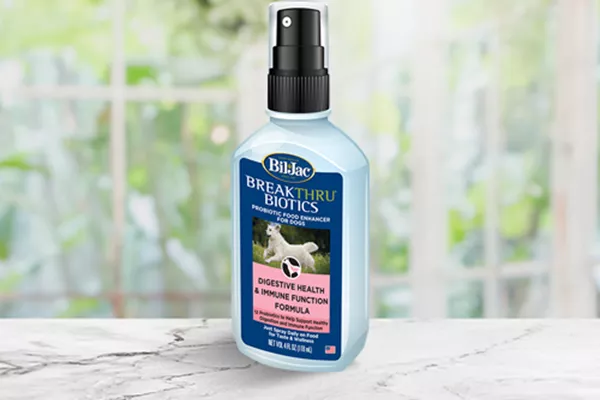Our furry friends are an important part of the family, and we try our best to keep them safe. Unfortunately, accidents and injuries can still happen when you least expect it.
Proper dog first aid techniques can help you stabilize your dog and even save his life. That’s why we’ve put together some helpful tips for Pet First Aid Awareness Month.
How to Care for Common Dog Injuries
Your dog can’t verbally tell you what’s wrong aside from a few whimpers, so basic pet first aid skills can help you identify the issue and what you can do to help. Of course, you’ll always want to have your dog checked by a veterinarian after a medical emergency. Here are the key steps to consider when your dog is injured:
Sprains and strains
Our four-legged friends can sometimes overdo it when jumping, twisting, wrestling, or even just running. The first symptom may be that your dog starts to limp. Here’s what to do:
- Call your veterinarian.
- In the meantime, try an ice pack or a heating pad for short periods.
- Try massaging the area if it doesn’t cause your dog pain.
- Make sure your dog rests.
Stings and insect bites
When the bees sting and the insects bite, here’s how to care for your dog:
- If your dog has been stung and has severe swelling around his mouth, nose, or throat, he may have difficulty breathing. Take your dog to the vet immediately.
- If the sting or bite isn’t causing any life-threatening problems, ease your dog’s discomfort by applying a cold compress to the affected area.
Eye injuries
It’s important to keep those puppy dog eyes as cute and clear as can be. Notice something wrong? Call your vet immediately if:
- There’s something in your dog’s eye. Symptoms include squinting and blinking excessively.
- It appears his eye is scratched. You’ll notice this if he’s squinting and tearing up.
- The eyelid is bruised or torn from a fight or other accident.
Broken nails
A nail that breaks to the quick requires an immediate visit to the vet. If the nail is cracked or broken a little, try these at-home methods to manage your dog’s broken nail:
- Stop any bleeding with a styptic pencil or cornstarch, followed by compressing the area with a towel.
- Soak the paw in warm water, then spray with an antiseptic.
- Try to bandage the paw loosely with gauze, or use a loose sock secured with adhesive tape. A plastic cone collar can keep your pooch from bothering the wound and bandaging. Change the bandage each day and keep the wound clean.
- Watch for signs of infection, such as swelling, discharge, bleeding. Notify your vet if any of these signs occur.
Ingesting a foreign object
Our dogs, especially puppies, might try to swallow something they shouldn’t. Here’s what to do:
- If you think your dog may have consumed something toxic, check to see if he is foaming at the mouth, has dilated pupils, or seems to have an abnormal mental state.
- If you can see the object in the dog’s throat and your dog is calm, you can try to remove the object with tweezers or a small set of pliers. Be careful not to push the object further down his esophagus.
- If your dog has completely swallowed the object, call your vet for advice on whether to try to let it pass through the gastrointestinal tract naturally, or whether an appointment is needed. It helps if you know what your pet has swallowed.
- Call a vet immediately if your dog ingests tube socks, corn cobs, or sharp items.
Poisoning
Different types of poison call for different types of first aid. Most packages include directions for what to do if the product is ingested or gets on your dog’s skin.
- Call your vet or Poison Control Center (PCC) before doing anything.
- Have all the information about the poison on hand as well as how much your dog may have consumed.
- Do not induce vomiting unless directed to by your vet or the PCC.
- Unsure what your pet got into? Call your vet immediately.
Cuts, abrasions, and bite wounds
When your dog is out and about, he can be susceptible to everything from cuts on his paws to bites from other animals. Here’s what to do:
- Apply a clean cloth over the wound. Apply pressure if bleeding, until the bleeding stops. If the blood soaks through, add another layer of gauze without removing the first layer until you can get your dog to the vet.
- Wrap the wound in gauze and secure with self-adhesive tape. Then, take your dog to the vet or a veterinary emergency room.
- Get your dog checked by the vet for any bite wounds. If you suspect your dog has been bitten by a wild or stray animal, call your vet immediately to rule out diseases such as rabies.
Heatstroke
Your dog can suffer from heatstroke or overheating if he is left outside for too long without water, especially during the summer. Take the following steps if your dog is overheated.
- Place cold, wet towels around your dog’s neck, head, armpits, and groin.
- As the towels become warm, replace them with cold towels.
- If towels aren’t available, run cool water over those same areas on your dog’s body. Make sure water is cool, not frigid.
- Offer your dog some cool water to drink.
- Take your dog to a vet as soon as possible.
Dehydration
Dogs can become dehydrated from repeated vomiting, fevers, heat stroke, or simply not drinking enough water. If you think your dog is dehydrated, pull up on the skin between the shoulder blades. It should spring right back when released. If it stays tented, this is a sign of dehydration.
- A good treatment for mild dehydration is to give your dog some Pedialyte. Mixing it with your dog’s regular water can help restore lost minerals and electrolytes.
- If your dog does not respond, or is severely dehydrated, see your vet immediately. He may need to be placed on IV fluids.
Hypothermia
A pet whose body temperature is too low may suffer from hypothermia. If that happens, your dog will stop shivering and become lethargic.
- Wrap your dog in blankets – pre-warm them in a dryer if you can.
- Snuggle with him if you can.
- Transport your dog to the vet’s office or a vet hospital as soon as you can.
- NOTE: If your pet suffers frostbite, do NOT rub the frostbitten areas.
Seizure
It’s not always easy to tell if your dog is having a seizure. Whole body seizures can cause your dog’s entire body to convulse, while signs of a localized seizure could be a facial tremor or unusual barking. Regardless, it’s important to act quickly.
- Get your dog to a safe place. Don’t restrain him or put your hands near his mouth. Your dog could attempt to bite you in his confused state.
- Call your vet immediately after your dog has a seizure. Provide your vet with crucial information like when the seizure started, how long it lasted, and what happened to your dog during the seizure.
Vehicular accidents
If your dog has been involved in an accident with a vehicle, you should call your vet right away. In the meantime:
- Approach your dog with caution. Your dog may be in shock and could react unpredictably.
- If possible, lift your dog onto a blanket and take him to the vet immediately.
- If your dog can’t be moved, you may have to ask your vet to come directly to the scene of the accident.
Assembling Your Dog First Aid Kit
It helps to be prepared with several pet first aid items so that you can your furry friend right away. Store your kit in a waterproof container that you can easily take with you if needed, and make sure all members of your family know where the kit is located. Here are the items your kit should include:
Phone numbers
Make sure you have a list of emergency phone numbers, including those for your dog’s veterinarian, an after-hours emergency veterinary hospital, and the National Animal Poison Control Center (1-888-426-4435, fee applies). Consider keeping your vet’s number and the emergency vet number in your cell and using “Emergency Vet” or “ICE Vet” as the contact name to help you find it quickly.
Medical history
It’s important to be up to date on your pet’s medical history. Be sure to include vaccination records and all medications your pet is taking in your kit.
Tools
From removing splinters to administering medicine, make sure your kit includes the following tools:
- Tweezers and needle-nose pliers to remove splinters or small objects stuck in the throat
- Small scissors for cutting gauze
- Magnifying glass
- Grooming clippers or safety razor
- Baby-dose syringe or eyedropper for administering medicine or to flush wounds
- Dog thermometer. Most regular thermometers for people do not go high enough for pet temperatures. A dog’s normal temperature is between 99.5 and 102.5 degrees Fahrenheit, according to the American Kennel Club (AKC).
Medicine and other medical supplies
Be sure to have the following supplies in your pet first aid kit:
- Sterile eye lubricant
- Sterile saline wash
- Water-based sterile lubricant
- Dog-specific antibiotic spray
- Hydrogen peroxide (3 percent)
- Rubbing alcohol
- Diphenhydramine, if approved by your vet
- Styptic powder or pencil
- Insect sting stop pads
- Glucose paste or syrup
- Tongue depressors
- Latex or hypoallergenic gloves
- Gauze sponges in a variety of sizes
- Gauze roll (2-inch width) for wrapping wounds or as a makeshift muzzle
- Elastic cling, non-stick bandages to stop or control bleeding and protect woods (never use ready-made bandages like BandAids® or liquid bandages on pets)
- Adhesive tape (hypoallergenic) for securing gauze in place
- Non-adherent sterile pads
- Topical antibiotic ointment (never use human antibiotic creams like Neosporin)
- Antiseptic towelettes
- Milk of Magnesia or activated charcoal to absorb poison (NOTE: NEVER administer milk of magnesia or charcoal without first calling your veterinarian or poison control center)
Household items and everyday dog supplies
To supplement your pet first aid kit, you’ll likely have these items around your house that can help aid your dog during an emergency:
- Nylon leash
- Cotton-tipped swabs
- Towel
- Instant cold pack
- Heating pad
- Safety pins (medium size 4)
- Compact emergency blanket
- Epsom salts
- Plastic card
- Petroleum jelly
- Penlight with batteries
- Muzzle to prevent your pet from biting you as you administer to his wounds or disturbing his wound while on the way to the veterinary treatment (Note: Do not muzzle your pet if he is vomiting)
Keep Your Dog’s Safety at First Paw
In addition to following the pet safety tips above, you can get first aid certified for pets. The Red Cross offers an online course that teaches you the basics in caring for your dogs through a variety of topics, from understanding and checking your pet’s vital signs to caring for the most critical emergency situations. This includes CPR for your pet and how to help if they are choking. The Red Cross also has a Pet First Aid app available to download, just text “GETPET” to 90999.
It’s always best to prepare for any situation that can occur with your furry family member. For other pet parenting and dog safety tips, sign up for the Best Friends Club to receive more helpful articles, as well as monthly coupons on Bil-Jac Dog Food, Treats, and other products.



